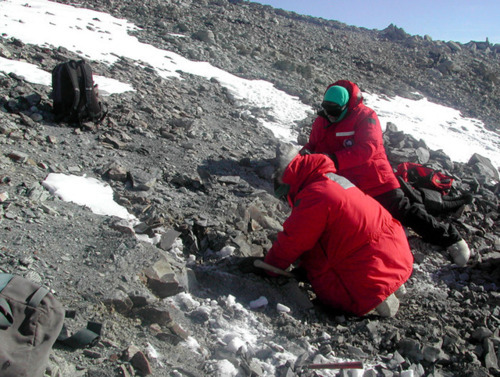Life will find a way: Scientists and tourists put Antarctica at risk for biological invasion

Life has an incredible knack for finding niches in which to thrive. And in Antarctica, with no permanent human population and only a very small and controlled number of tourists and scientists visiting each year, life has managed to hitch a ride to the most inhospitable continent on Earth in the form of tiny seeds attached to shoes, clothing and bags.
During the first summer season of the International Polar Year, the researchers behind the study stopped 853 visitors to Antarctica, including scientists, tourists, and support staff. These visitors accounted for about 2 percent of the total landings during that period. Using a vacuum, they collected as many seeds as they could from the visitors’ clothes, footwear, walking poles, and packs.
On average, each person was carrying 9.5 seeds. Boots and bags were the most common places to find seeds. Scientists were more likely to be seed carriers than tourists, and brought with them two and a half times more seeds than tourists did. Support staff were the most likely visitors to be carrying seeds. However, raw numbers made a big difference. That season, tourists landed on Antarctica a total of 197,616 times. That’s almost 8 times more landings than support staff, and 28 times more landings than scientists, making tourists a very important source of potential invasions.
But these seeds obviously aren’t a threat to Antarctica unless they can actually germinate and grow in the inhospitable conditions. However, once the visitors were questioned about their travels in the previous year, it began to seem more likely that these seeds might be able to take hold. More than half of the visitors had visited a cold climate, such as an alpine or polar region, in the last year. It’s likely that at least some of the seeds they were carrying could survive in the Arctic.
The researchers then identified the seeds they had collected, classifying 88 percent to the level of scientific family, and identifying the specific species for nearly half the seeds. Many of those that were identified come from families of arctic plants, and several are already known to be invasive plants. It’s possible that up to 61 percent of the seeds collected could survive in the commonly visited areas of Antarctica.
Most of Antarctica is under low risk of invasion, due either to low visitation or a thick, protective layer of ice. The Western Antarctic Peninsula—the small, ice-free strip of land and islands where most visitors disembark—is the area most threatened by invasive species. A few scattered areas in the Western Ross Sea area and on the eastern edge of the continent are also at relatively high risk. Climate change models indicate that, by 2100, the risk of invasion will rise in much of Antarctica, due to rising temperatures and longer growing seasons.




Notes